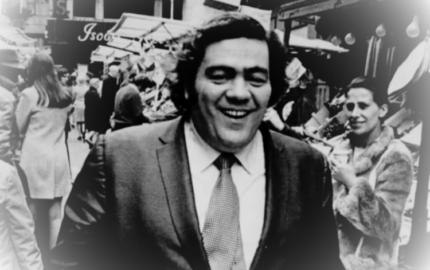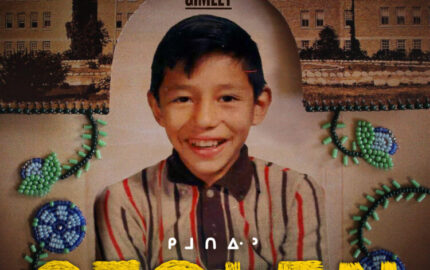In our latest Notable Narrative, “Did My Brother Invent E-Mail with Tom Van Vleck?,” Errol Morris rejects many of the standard rules of narrative writing.
Best known for his films “The Fog of War” and “The Thin Blue Line,” Morris has more recently been building an eccentric, hybrid form of writing in his work for The New York Times’ Opinionator blog. His latest five-part series only dips a toe into the lyrical scene-setting or expository arc readers might expect from a standard essay. When he does adopt a traditional rule – “Use dialogue” –Morris bends it to his will, plugging in whole conversations, sometimes allowing the script of a phone call to run continuously for thousands of words, morphing his essay into an interview.
We’ve looked before at the role of words in multimedia storytelling, but Morris turns this frame back on itself by doing written narratives largely about visuals. His approach injects an investigative reporter's sensibility into earlier conceptual thinking about pictures, such as John Berger’s “Ways of Seeing” or Susan Sontag’s “On Photography.”
Morris' forthcoming book, “Believing Is Seeing (Observations on the Mysteries of Photography),” will gather several of his New York Times pieces and offer autopsies on visuals from theaters of war spanning more than a century. In a post this month on The Boston Globe’s “Ideas” blog, Leon Neyfakh describes these objects of Morris’ fascination:
If Morris breaks with standard approaches to narrative nonfiction, he does retain a few underlying tenets. This latest series starts with a mystery, in which a former acquaintance posts online that Morris’ brother Noel, who died long ago, invented email. Everything that follows is an attempt to understand whether and how that statement could be true. But in answering it, Morris himself learns – and teaches readers – about the social history of the computer and coding, from diners to hacking. And he recovers a piece of the brother he lost decades ago.
Best known for his films “The Fog of War” and “The Thin Blue Line,” Morris has more recently been building an eccentric, hybrid form of writing in his work for The New York Times’ Opinionator blog. His latest five-part series only dips a toe into the lyrical scene-setting or expository arc readers might expect from a standard essay. When he does adopt a traditional rule – “Use dialogue” –Morris bends it to his will, plugging in whole conversations, sometimes allowing the script of a phone call to run continuously for thousands of words, morphing his essay into an interview.
We’ve looked before at the role of words in multimedia storytelling, but Morris turns this frame back on itself by doing written narratives largely about visuals. His approach injects an investigative reporter's sensibility into earlier conceptual thinking about pictures, such as John Berger’s “Ways of Seeing” or Susan Sontag’s “On Photography.”
Morris' forthcoming book, “Believing Is Seeing (Observations on the Mysteries of Photography),” will gather several of his New York Times pieces and offer autopsies on visuals from theaters of war spanning more than a century. In a post this month on The Boston Globe’s “Ideas” blog, Leon Neyfakh describes these objects of Morris’ fascination:
His essays tend to focus less on people than on objects, documents, and historical events. But as with his films, you can detect something unmistakable at work: a mind wrestling with what looks like intractable uncertainty — with questions others thought too hopelessly ambiguous to ever resolve, or too open-and-shut to bother with.
If Morris breaks with standard approaches to narrative nonfiction, he does retain a few underlying tenets. This latest series starts with a mystery, in which a former acquaintance posts online that Morris’ brother Noel, who died long ago, invented email. Everything that follows is an attempt to understand whether and how that statement could be true. But in answering it, Morris himself learns – and teaches readers – about the social history of the computer and coding, from diners to hacking. And he recovers a piece of the brother he lost decades ago.


